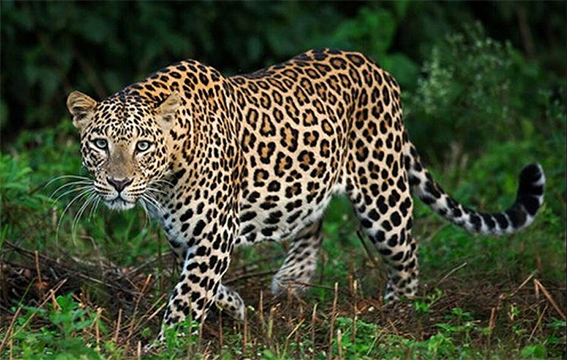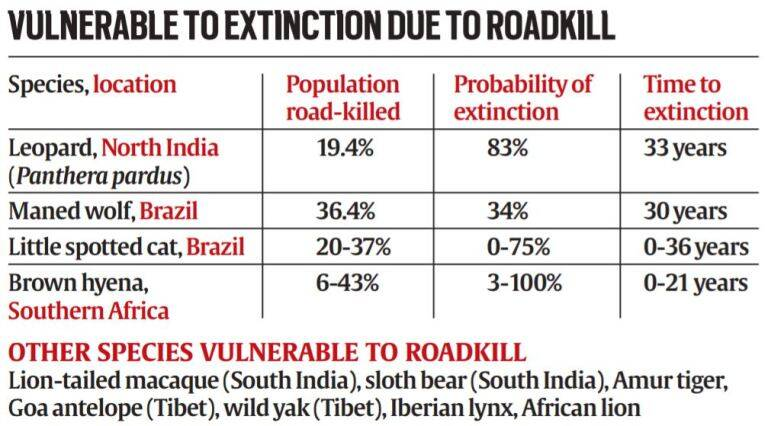Biodiversity & Environment
Increased Risk of Extinction: Leopards
- 06 Nov 2021
- 3 min read
Why in News
According to a study published in the journal Global Ecology and Biogeography, the leopard faces an 83% increased risk of extinction in North India due to roadkill.
Key Points
- Findings of the Study:
- The leopard population of North India is at highest risk among four animal populations identified as being the most vulnerable to extinction in the next 50 years if observed roadkill levels persist.
- Leopard is followed by the maned wolf and the little spotted cat, both of Brazil, and the brown hyena of southern Africa.
- At an 83% increased risk, the study estimates the time to the North Indian leopard population’s extinction at 33 years.
- Other populations found highly vulnerable include the lion-tailed macaque (Macaca silenus) and sloth bear (Melursus ursinus) in South India.
- The study brings attention to Sub-Saharan Africa and south-eastern Asia as regions where roads can lead to loss of mammalian biodiversity and thus, areas where future road development and road mitigation need to be carefully considered.
- The leopard population of North India is at highest risk among four animal populations identified as being the most vulnerable to extinction in the next 50 years if observed roadkill levels persist.
- Leopard:
- Scientific Name: Panthera pardus
- About:

- The leopard is the smallest of the Big Cats (Of genus Panthera namely the Tiger, Lion, Jaguar, Leopard, and Snow Leopard), and known for its ability to adapt in a variety of habitats.
- A nocturnal animal, the leopard hunts by night.
- It feeds on smaller species of herbivores found in its range, such as the chital, hog deer and wild boar.
- Melanism is a common occurrence in leopards, wherein the entire skin of the animal is black in colour, including its spots.
- A melanistic leopard is often called black panther or jaguar, and mistakenly thought to be a different species.
- Habitat:
- It occurs in a wide range in sub-Saharan Africa, in small parts of Western and Central Asia, on the Indian subcontinent to Southeast and East Asia.
- The Indian leopard (Panthera pardus fusca) is a leopard widely distributed on the Indian subcontinent.
- It occurs in a wide range in sub-Saharan Africa, in small parts of Western and Central Asia, on the Indian subcontinent to Southeast and East Asia.
- Population in India:
- As per a recent report ‘Status of leopards in India, 2018’ released by the Ministry of Environment, Forest and Climate Change, there has been a “60% increase in the population count of leopards in India from 2014 estimates’’.
- The 2014 estimates placed the population of leopards at nearly 8,000 which has increased to 12,852.
- The largest number of leopards have been estimated in Madhya Pradesh (3,421) followed by Karnataka (1,783) and Maharashtra (1,690).
- As per a recent report ‘Status of leopards in India, 2018’ released by the Ministry of Environment, Forest and Climate Change, there has been a “60% increase in the population count of leopards in India from 2014 estimates’’.
- Threats:
- Poaching for the illegal trade of skins and body parts.
- Habitat loss and fragmentation
- Human-Leopard conflict
- Conservation Status:
- IUCN Red List: Vulnerable
- CITES: Appendix-I
- Indian Wildlife (Protection) Act, 1972: Schedule-I





